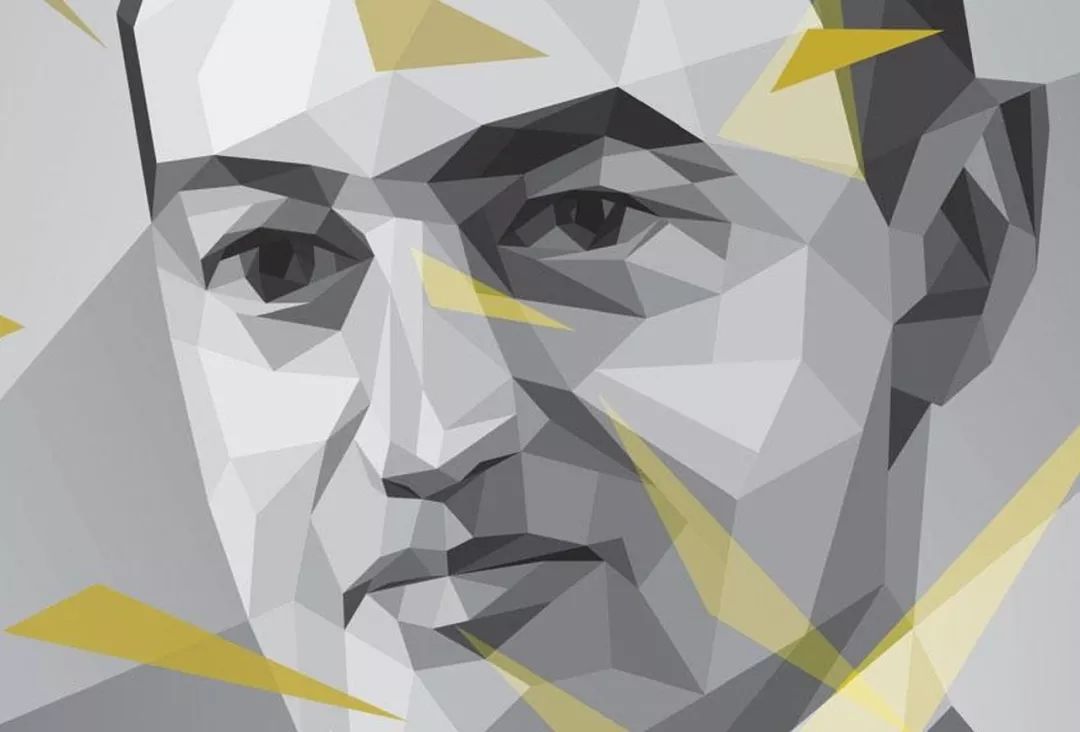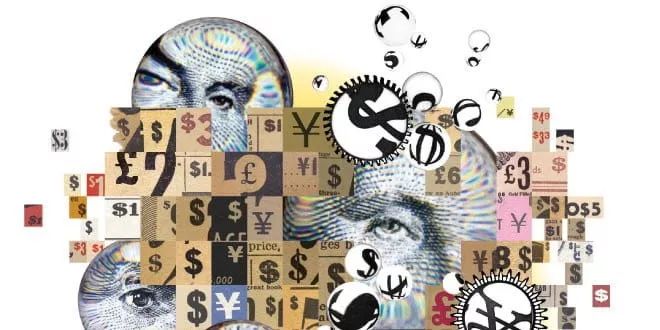Read a history of finance and regulation, as well as a lesson for DeFi
Author: Mario Laul, block chain investment institutions Placeholder researcher
Translator: Lu Jiangfei
Source: Chain News
There are some important patterns in the development history of the financial industry, the most obvious of which are the systemic crisis and the subsequent collapse of asset prices or income streams, as well as multiple games between financial innovation and regulation.
- Eight currencies that are about to halve in 2020
- "2019 Blockchain Panoramic Scan": Global Policy
- Interpretation of the head of China Telecom's blockchain business R & D: Why do telecom operators do blockchain?
In the field of open, automated crypto financial services (so-called DeFi), if architects can understand these interactions, they can better assess potential risks to deal with different economic and regulatory scenarios.
This article will focus on related historical cases and try to analyze the potential long-term significance of this wave of financial innovation.
Financial and creative destruction
Austrian-American economist Joseph A. Schumpeter has pointed out that the core of capitalism is creative destruction—as traditional ways of doing things are replaced by innovative alternatives, economic structures often undergo repeated, And often a painful reorganization.

Austrian-American economist Joseph Schumpeter, from Forbes
The creative destruction of the financial industry mainly occurs in two ways: first, the introduction of new inventions and their successful introduction to the market requires financial support; second, the financial industry itself is constantly innovating, which makes the form of financial relationships increasingly The more diverse and complex.
Generally speaking, innovation is beneficial, but it also introduces new risks that are difficult to understand at first, and is accompanied by cyclical instability that is easily contaminated by currency issues. Because finance plays a central role in economic development, financial innovation also raises a question: what kind of appropriate supervision should the financial industry be subject to, without harming its role in promoting social progress.
There are several examples in recent Western history that changes in financial practice have promoted economic transformation and made the existing regulatory framework obsolete. On the other hand, whenever innovation leads to new forms of participation in financial markets, it also triggers institutional restructuring, including new regulations to address consumer protection, market integrity, and (perhaps most importantly) social and economic stability. Worry. Here are some typical examples (if you are not interested in the history overview, you can skip this paragraph, we will emphasize it again when we talk about DeFi later).
A combination of "limited liability" and "transferable joint stock" in England in the late 18th and 19th centuries
Although the two have been invented before, the combination of the two in the context of British industrialization has played a key role in the formation of modern financial markets and commercial regulation.
"Joint financing" is mainly used in industries that require a large amount of up-front capital expenditure, such as shipping, mining, railways, utilities and insurance. This form of financing has directly promoted the development of the UK securities industry and related laws. , Media and administrative functions.
In terms of investor's personal debt, controlling an upper limit on the debts that the entities that they invest in can promote more risky behavior. On the other hand, as ownership acquisition and transfer become easier, the public market has attracted a wider range of investors, among HNWIs (the core source of funding for emerging, unproven industry exploration) and banks (more mature Corporate credit sources), supplemented by more funding sources.
The expanding securities industry has promoted new forms of capital, but at the same time it has made the financial system more and more complex, while formal regulations, standards and risk management norms have not been developed, and some have even been ignored. In an environment of speculative impulses, this naturally leads to excessive and bad behavior, coupled with the lack of an institutional framework to deal with systemic shocks (such as England in 1825, sometimes referred to as the first modern financial crisis), the result must A series of important reforms.
Important interventions include:
- In 1812 and 1821, the London Stock Exchange implemented self-regulatory measures to reduce fraud and improve due diligence on market participants;
- In 1816/1821, the world's first gold standard was established to restrict government and the financial sector;
- Introduced the Country Bankers Act in 1826, allowing the creation of joint-stock banks that can issue notes outside London, aiming to make the British banking system more competitive and resilient, and better for the growing industrial economy service.

Bank of England opens its first branch in 1826 under the National Banker Act
Of course, all these regulatory measures have also fallen into ideological controversy and set the stage for new types of challenges in the future. Subsequent regulatory milestones include:
- The 1844 Joint-Stock Companies Registration, Incorporation and Regulation Act (1844) aims to streamline the company formation process and increase public confidence in business;
- The 1855 Limited Liability Act (1855 Limited Liability Act) regulates limited liability and fundamentally extends the scope of limited liability;
- The 1844 Bank Charter Act (1844) seeks to mitigate the destabilizing effects of excessive banknote issuance.

Bank Charter Act 1844
In a rapidly expanding economy, as one would expect, the latter has become an obstacle. As long as there is a full-scale liquidity crisis, the bill will be suspended and the Bank of England will gradually become the ultimate solver of the currency issue.
Progress brought by the U.S. financial crisis in the late 19th and early 20th centuries
In the historical development of the US financial market and corporate governance, this is an eventful season, with a variety of innovative practices, and the big background is large railway companies and industrial trust companies (such as Standard Oil and American Steel).
In periods of active financial activity, more controversial operations often occur, such as stock-mixing, such as anti-competitive business practices, which are at odds with creative companies. In addition, people are increasingly worried about the increasing wealth and power of a handful of financiers and industrialists. The whole society is hostile to large enterprises, and with it comes various regulations and regulations aimed at reducing Economic centralization and increased corporate information disclosure. The most famous regulations of this period include the 1890 Sherman Antitrust Act, the 1914 Clayton Antitrust Act, and the Federal Trade Commission Act of 1914 "(1914 Federal Trade Commission Act).
Importantly, a series of ups and downs occurred during this period, such as major crises in 1884, 1893, 1896, 1901 (the first stock market crash on the New York Stock Exchange), and 1907. The specific causes of each crisis are different, so this article will not explain in detail. These crises not only caused serious damage to the financial market and the entire economy, but also stimulated a series of fierce debates on whether the institutional foundation of the US financial system should be centered on gold. The final result of the debate was that of the US Federal Reserve System in 1913. set up.

Federal Reserve Board, 1917
It is worth noting that although the 1913 Federal Reserve Act of 1913 represented a major change in federal legislation, many regulatory powers remain in U.S. states and private sector agencies, including local clearing houses , Banking associations, financial groups, professional service providers such as rating agencies, and of course stock exchanges. Today, state legislators and industry associations in the United States still play a very important role in US financial regulation.
Stock market boom of the 1920s, the crash of 1929, and subsequent U.S. regulatory measures
The market boom breeds a crisis and eventually moves towards the Great Depression. This process has led to an unprecedented popularity of common stock ownership. Facts have proved that the highly competitive securities industry has become a fertile ground for various bad behaviors. On the one hand, people generally expect to make a quick profit in the stock market; on the other hand, many people start to pay by installments or even borrow money to buy stocks. The two sides form a dangerous combination. At the same time, investment institutions have begun to hire a large number of securities salespeople, whose main job is to find the most urgent shareholders in the vast crowd of investors. Compared with stock issuers and their representatives, these shareholders are inevitably disadvantaged in information.
An important development at this stage was the emergence of investment trusts. For those "securities where buyers can't be found elsewhere," investment trusts have become a convenient dump. Although investment trusts also existed before, their number surged in the 1920s. In the United Kingdom, investment trusts tended to choose diversification and long-term investment strategies. On the contrary, many investment trusts in the United States at the time did not shy away from speculation, but were actively constructing increasingly complex capital structures.
All of the above have occurred in an environment where the standards of regulatory and information disclosure are still relatively underdeveloped, which also caused the financial crisis of 1929 to cause unprecedented losses. The US government has subsequently taken a series of emergency interventions to stabilize the banking system and control deflation. In addition to various updates to state-level regulations, there are also landmark changes in federal legislation to improve investor protection and market integrity. The most famous examples include:
- The 1933 Securities Act introduced stricter securities registration requirements;
- The 1933 Banking Act (1933) established the Federal Deposit Insurance Corporation (FDIC);
- The 1934 Securities Exchange Act established the United States Securities and Exchange Commission (SEC).
After the collapse of the Bretton Woods system in 1971, especially in the United States, and gradually deregulation and technological development worldwide, eventually leading to the 2007-2008 Global Financial Crisis (GFC)
There is a word that better describes this period: financialization, that is, financial institutions and instruments have become increasingly important relative to other parts of the economy. Recent developments in this area have taken place within or as a channel of the so-called shadow banking system, that is, operating outside conventional banking supervision.
The wave of financial innovation has been noticeable since the early 1970s. A complete list is a huge research task, but the most obvious trends include the following: financial digitization, increasing use Leveraged, securitized and quantified risk models, deteriorating regulatory and endorsement standards (resulting in higher debt levels), and the continued proliferation of increasingly complex and esoteric financial products, some of which are triggering the financial crisis and the Great Depression in the US It played a key role in the crisis.
As in the first three periods, the outbreak of the crisis has sparked discussions about the need for proper financial regulation. However, in addition to the 2010 Dodd-Frank Act, the 2011 Consumer Financial Protection, and a series of emergency interventions triggered by the European debt crisis of 2010-2012 To some extent, the actual supervision measures are actually limited.
At the same time, unconventional forms of monetary policy such as quantitative easing, zero interest rates and even negative interest rates have become the new normal. Coupled with the rise of new trends in distributed computer systems, cryptography and automation technology, all of this provides a big backdrop for the emergence of crypto assets and DeFi.
What is (not) special about DeFi?
Perhaps the most notorious sentence in all financial fields is: "This time is different from the past."
Indeed, each economic cycle unfolds in a unique historical environment. It would be too simple to say that the underlying mechanism has remained essentially the same over time. However, there are still some important historical laws that cannot be ignored. Before considering the relationship between these factors and some of the more unique characteristics of encrypted networks and DeFi, let's look at the following reasons to understand why observing the development of DeFi, an emerging industry, has a strong sense of familiarity:
To understand DeFi in the broader financial context, three basic elements related to financial innovation and development are very important.
First, various potential financial assets / contracts are growing, and the issuance, trading, and monetization of these assets / contracts are being continuously simplified and democratized. DeFi is just the latest example.
Second, use technology to operate financial markets. From railways to telegraphs, to Consolidated Tape System, computers, the Internet, and high-frequency trading robots, the financial industry has been at the forefront of adopting new technologies. Today, DeFi is at the vanguard in the development of use cases for decentralized networks and smart contracts.
The third point relates to the evolution from a broker / agent (to trade on behalf of others, earning commissions) to a trader / trustor (to trade on their own account, at their own risk). This shift from someone to overlap with another person's role has occurred in the history of many financial markets, such as commodities, foreign exchange, stocks, interest rate swaps, and subprime mortgages, each time bringing New risks. Because this systemic shift places important market players on responsibilities that they may not be able to afford. A similar perspective can be used to analyze DeFi, such as periodically assessing the extent to which crypto financial service providers (such as exchange operators and major brokers) can participate in (potential leverage) position transactions using their own accounts.
The emerging industries, which are still informal and marginalized at the beginning, will go through an institutionalized and specialized process. In terms of DeFi, this involves the emergence of crypto financial protocols and institutions that provide services, such as data curation and disclosure, exchanges, interest accounts, lending, investment management, structured products, insurance, etc. Some professional intermediaries will start to appear, such as Stake Capital, Chorus One and Staked, and industry associations will be created, such as MAMA and POSA, and more and more formal governance structures will also be established, such as online forums, ecology System funds, voting mechanism, procedures for changing agreement rules, decentralized autonomous organizations of exchanges, etc.
The emergence of new financial systems in areas with underdeveloped market infrastructure and regulatory standards provides ample room for fraud, manipulation and other suspicious behavior. This point is further amplified in DeFi, either because of some ideological motivations or because of the technology choices that initially started the industry.
In general, innovation activities often create a mismatch between market practice and existing regulations. This has two effects: first, it triggers a conceptual discussion about whether minimal and / or self-regulation is better or external regulation needs to be updated; second, there is some kind of creative disruption as a result, This also introduces new problems and challenges.
Importantly, the latter are often misunderstood and underestimated until shock events such as the financial crisis occur. A similar situation may occur with DeFi, and it faces the threat of new systematic cybersecurity. For DeFi networks and related applications, the ability to handle these risks and respond to potential crisis situations will be a very important competitive advantage.
Over time, market participants and regulators will find that this position will gradually shift to a more stable, more compliant, and more consumer-friendly system.

Financial stability can be summarized into two goals: first, the prudent supervision of rights and responsibilities in financial contracts requires a balance between allowing voluntary agreements and avoiding overheating relationships, which may lead to some undesirable consequences, Examples include deflationary spirals, extreme inequity and even social conflict. As DeFi continues to evolve, finding this balance will become increasingly important. Second, try to reduce the possibility of a price crash in a wide range of economies, specifically the asset / collateral price (the result is negative equity and insolvency) and the income stream (the result is bankruptcy, which makes it impossible to make the necessary repayments) .
Achieving these goals must not undermine healthy market discipline, as market discipline prevents the expansion of unsustainable economic arrangements. These considerations also need to take into account larger contexts, such as power relations and wealth inequality, both of which are important determinants of social and political conflict.
As a specific example, if we use a financial instrument to value debt and other responsibilities, and the economy associated with it is growing, then reducing the supply of such financial instruments (or providing a fixed amount of supply), then Will benefit asset holders, creditors and landlords; a more inflationary supply of this tool (preferably for true value creation) will benefit entrepreneurs, debtors and workers. Different orientations will have an impact on how people view the fairness of the financial system. Undoubtedly, the emerging crypto financial economy has to deal with these basic issues.
All in all, financial innovators tend to underestimate the rationale behind the systems and regulatory arrangements that build existing systems. In fact, these systems and regulations have emerged through long-term trial and error in a changing economic and political environment. In the crypto finance industry, people always feel that “old systems are outdated”, and they mainly discuss issues based on technological and social changes. Considering the development stage of the industry, people really lack experience and historical perspective. In other words, each generation needs to learn from its own practice and strive to take advantage of the uniqueness of its era to create the greatest possibility.
However, if we only consider DeFi as a new chapter in the giant axis of financial history, then our analysis is not comprehensive enough. We should also focus on the uniqueness of DeFi and its potential to change the world, which are related to the fundamental drivers of the financial economy, such as asset prices, maintaining income streams (so that payments can continue), ethics and business of market participants Integrity, the accumulation of systemic risks, and the evolving role of regulators. DeFi is unique as follows:
- The principles of open source, decentralized, license-free networking, cryptographic verification, and self-control of data provide DeFi with some interesting features, such as the possibility of code and ledger forks, improved control of personal information, enhanced privacy, The ease (composability) of combining multiple protocols or applications into a single interface. As DeFi improves the user experience, the true potential and value of these features will become more apparent.
- DeFi is native to the Internet, so it has been digital and global since its inception. DeFi is also more decentralized than previous generations of financial technology, so it is also difficult to review or regulate. However, over time, if the current digital divide gradually diminishes, then DeFi may become a huge balancing force, making financial services more accessible to everyone as long as he / she has an Internet connection Computers and mobile computing devices. Access to financial services is a key component of economic opportunity, and the popularity of financial services is also the foundation of an inclusive and prosperous society.
- DeFi is built on a globally auditable digital ledger, and also leverages the trust and contract execution guarantees provided by distributed computing networks (most of which are currently built on Ethereum). In theory, this allows it to perform automated risk management and more precise regulatory oversight. Ideally, assuming DeFi can scale and enter the mainstream, it will undoubtedly make the financial system more efficient, transparent, and flexible. However, it has the potential to significantly reduce the effectiveness of state regulation and create new systemic risks as it facilitates unprecedented global integration, complex and unfamiliar forms of finance. Understanding and solving these problems, especially in crisis situations, will have a profound impact not only on the future of finance but also on the global community.
- In addition to the deployment of network hardware, the emergence and development of DeFi is actually relatively independent of other parts of the economy. Therefore, we need to distinguish between two types of systemic risks: internal and external. Internal risks have been discussed a lot, especially with regard to the growing importance of Ethereum, many leading financial applications based on Ethereum (such as MakerDAO). External risks are not discussed much, but with more and more contacts and integration of DeFi with traditional financial systems, and being used to coordinate production and transactions in the real economy, external risks deserve more careful consideration. A larger background includes the increasing importance of crypto assets in traditional portfolios (the price volatility of crypto assets will also become more and more important), and the amount of debt and income denominated in cryptocurrencies will also increase. . With the continuous development of this new economy, it is necessary to understand the related balance sheet with crypto asset prices and cash flow exposure, so as to assess how likely it is within DeFi and its connection to other parts of the economy Can lead to systemic risks.
- The blockchain network and the open financial system built on it are a continuous driving force that makes the global management infrastructure super-rational and automated. If successful, it could create an unprecedented bureaucracy in which human administrators are increasingly being replaced by machines. On the one hand, this could lead to amazing efficiency improvements in information processing and facilitating transactions. On the other hand, these systems may gradually evolve into some form of "silicon cage"-in this society, more and more administrative decisions seem to require very little subjective input, and it follows a set of abstract, Automated "the system" rules. This system is too large and complex for any single human group to directly review or govern. In a way, this is also the state of society as we know it today. However, if a global decentralized computing network emerges that is both systemically important and difficult to control unilaterally, the situation will be more complicated and difficult to name.
to sum up
Financial services provided through open source protocols and decentralized networks have come to us. In the past, concerns about consumer protection, market integrity, and economic stability have played a decisive role in developing financial supervision and institutional foundations-each time with a crisis. Crypto financial technology has the opportunity to democratize financing channels and make the economic system more efficient and transparent. But it may also create new forms of systemic risk, especially as cryptoassets and DeFi applications become increasingly important to coordinate real economic behavior. As the complexity of a system increases, it may become increasingly difficult for humans to understand, directly control, or govern it.
The core goal of financial services is to continuously support behaviors that guarantee human health and a happy life. Are DeFi and crypto financial technology a future that humans want? Perhaps only time will tell.
We will continue to update Blocking; if you have any questions or suggestions, please contact us!
Was this article helpful?
93 out of 132 found this helpful
Related articles
- 4D long texts talk about decentralized storage
- Looking ahead to 2020 | Coinbase: What have cryptocurrencies experienced over the past 10 years?
- SheKnows End of Year Debate | Talking about Bubble Discoloration? Layout of blockchain, capital will never sleep!
- Blockchain landing application 2019 statistics: government affairs and finance occupy half of the country, and China's blockchain landing volume has reached the world
- Can Andrew Yang's White House Crypto Party be held successfully in 2020?
- Comment: Regulatory sandbox and blockchain coexist and help innovation
- Supervision stick, giant "encirclement and suppression", how does the crypto industry redeem itself?






